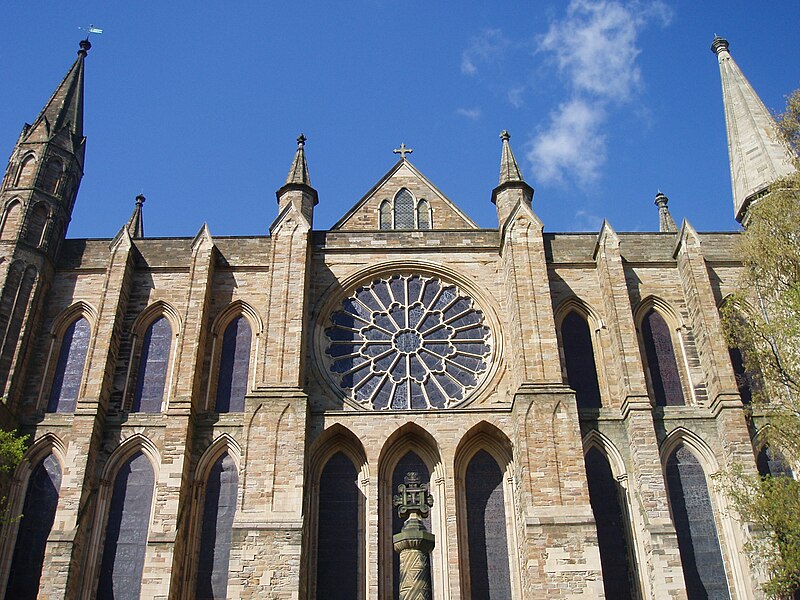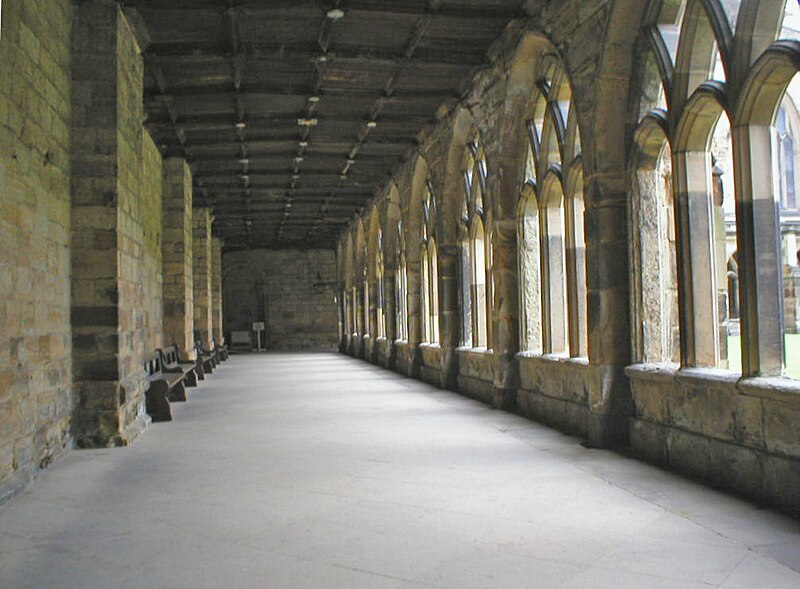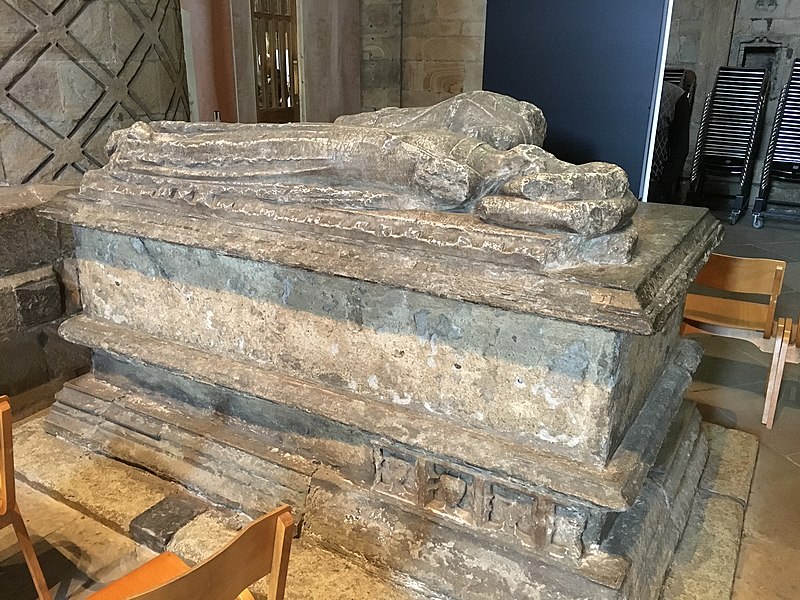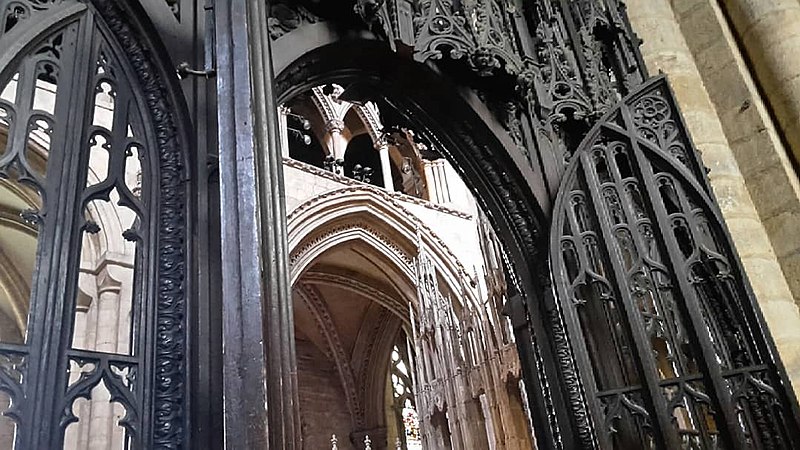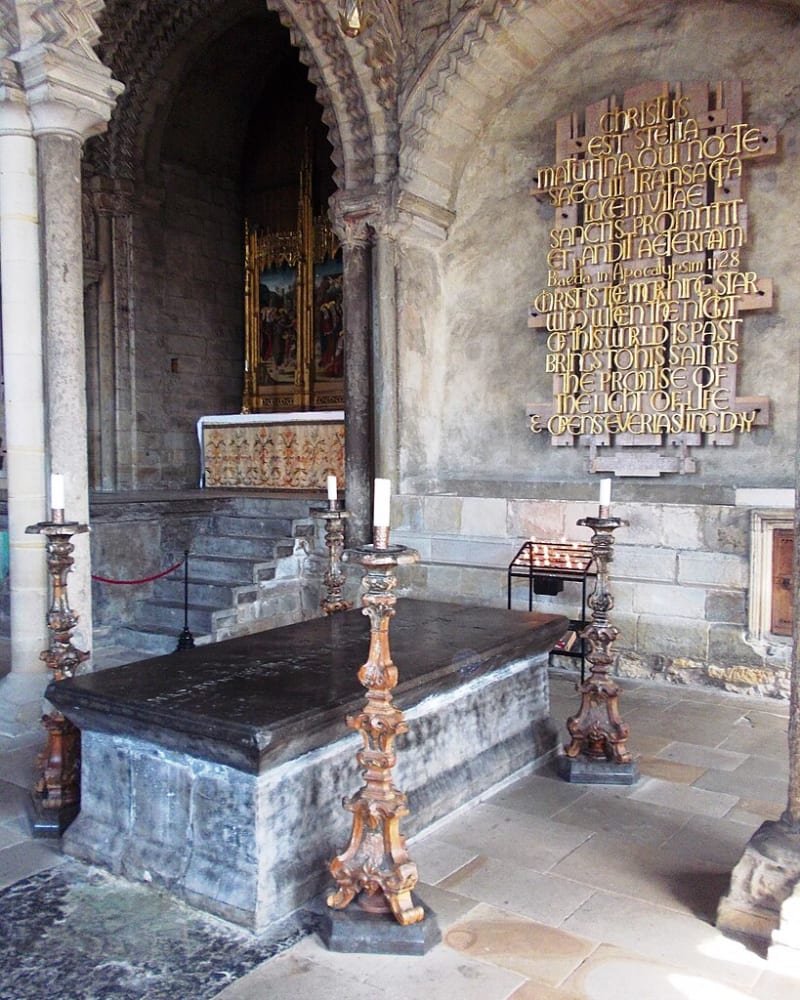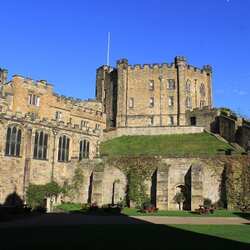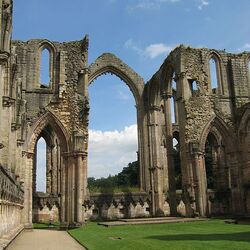Durham Cathedral
Durham Cathedral is a wonderful reminder of the era of princes and bishops. This building combines three main innovations of the revolutionary Gothic style.: pointed arches, ribbed vaults and archbuttons. Durham is one of the peaks of cathedral architecture in this or any other country.
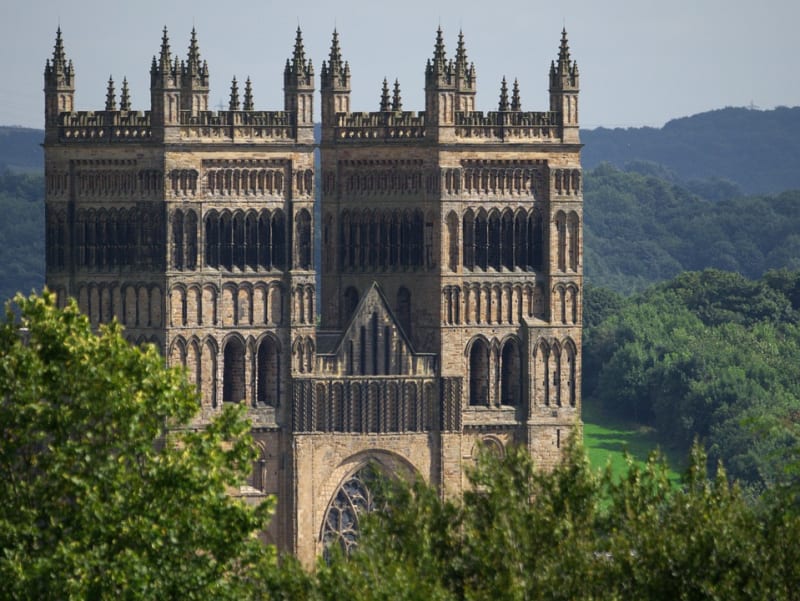
The History of Durham Cathedral
Work on Durham Cathedral dates back to 1093, shortly after the funeral of William the Conqueror. The story goes back to Saint Cuthbert, Bishop of Lindisfarne in the 7th century. Fearing Viking raids, the monks of Lindisfarne fled with the remains of Saint Cuthbert in the 9th century, until the coffin became too heavy to carry. Considering this a sign that the saint decided that this was a good place for burial, they built a shrine. Over the next few decades, a church was built, which became a popular pilgrimage destination. Soon a city appeared around the church. That city was Durham.
Stone architecture
While most English churches of the time were built at least partially of wood, Durham Cathedral had to be built entirely of stone. Since the fall of the Roman Empire, no one had really mastered stone architecture, so it was an ambitious construction. The architectural style of that time was known as Romanesque, which was not so much a single movement as a general trend throughout Europe. Romanesque buildings were completely made of stone, but could only support a lot of weight due to the fact that they were thick, heavy and with very small windows. The goal was to make Durham Cathedral more spacious, and the engineers had a theory on how to do it. The columns, built into the opposite walls, passed into the ceiling, arched upward and met at a point in the middle.
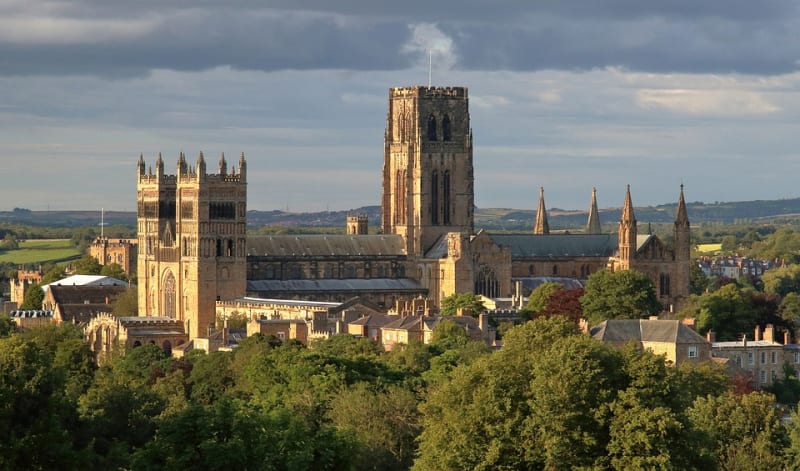
Durham Cathedral Libraries
There are 3 libraries in Durham Cathedral. The Library of the Chapter, the remains of a medieval monastery library, is of the greatest interest to most visitors. There is a rich collection of manuscripts, as well as music from the 17th and 18th centuries. The church also has a library of current theological works and a library of German Protestant theological texts.
A haven for criminals
If a fugitive seeking salvation knocks on the main door of Durham Cathedral, he will be granted asylum for 37 days. After knocking with a hammer, the monks will ring the bell to announce the arrival of the fugitive. After 37 days, he could reconcile with his accusers, or be evicted to face the law.
